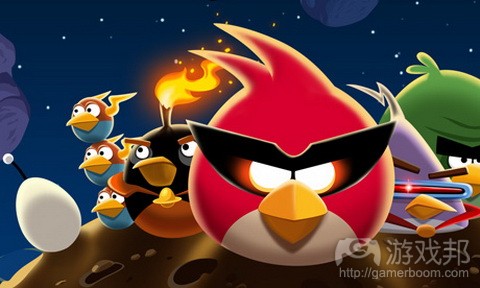免费模式或将导致移动游戏领域走向末日
作者:Luis Levy
在移动开发领域,免费模式(F2P)如今被视作是唯一的创收方式。言归正传,多数开发者都将“免费模式”看作是入驻App Store榜单前列的最便捷方式。
但免费模式也存在薄弱环节,其中有个弊端鲜少被谈及:它是导致不少游戏公司裁员、然后入不敷出,最终破产的问题所在。
免费模式的价值问题
我的许多客户在都在免费模式中获得满意经历。其他人则是,下载量提高,但没有获得任何收益。移动开发者似乎在同这样的事实进行抗争:如今游戏应该采用免费模式。
单次销售的收益不容忽视。若你通过定价1.99美元获得100万次下载量,那么在苹果30%的分成后,你将收获39.3万美元。若你的应用采用免费模式,那你就分文未得。与此同时,你需要即时向开发人员支付酬劳,租金也将到期。就长远来看,IAP具有可行性,但它们无法立即转变成实际收益。
免费模式的另一问题是,我们如何看待免费模式。包含IAPs、广告等内容的“免费”平板电脑游戏与定价1.99美元的“付费”版本,你会选哪个?有些玩家(游戏邦注:尤其是儿童和青少年)多半会选择免费版本,因为他们资金有限,而其他人则会支付1.99美元,且满心欢喜。事实证明付费购买内容是种愉快感觉。我们喜欢花钱购买自己选择的道具,尽情享受它们,公开捍卫它们。新应用/游戏/智能手机/汽车/房子/船现在是我们的了,我们会倍感珍惜,向同伴展示。
另一方面,如果我们免费获得某内容,就不涉及交易活动。根本来说,我们被赠予这一产品——我们将其收下。整个所有权关系此时是破碎的。你是否注意到,免费应用比付费应用的差评更多?免费手机不像售价299美元或200美元的最新款高性能手机那样拥有忠实拥护者?事实证明,和产品本身一样,价格也是决定产品品质的因素。若你免费提供你的产品,这就像是在说,你的产品毫无价值。
苹果和付费定价的影响
你是否遇过iPad持有者抱怨要掏700美元购买自己的平板电脑?你是否听过一些高管说他掏太多钱购买支持Retina的MacBook Pro?我想多半没有。苹果清楚,价格能够有效区分产品。除收益外,昂贵产品能够给自己创造保护光环,前提是他们提高符合这一价位的高质量产品。这是苹果之所以在iPhone、iPad和MacBook产品系列中战绩显著的主要原因。
在此,我的建议是,开发者应该在应用/游戏中采取1.99美元的基本定价,假设产品非常精致,没有漏洞,非常吸引眼球。1.99美元的起步价能够让开发者开展0.99美元或者甚至是“Free App A Day”的促销活动。
免费应用将无法开展促销或免费活动。同时这还会促使用户因人工付费墙和不完整玩法心生不满。你将获得排名、下载量和市场渗透——就是这样。
PR角度
我靠开展手机和独立游戏PR活动谋生。在和移动开发者共事3天后,我发现植入IAP的免费应用和付费应用存在显著差异。多数情况下,免费应用很难“推广”,原因如下:
(a) 新闻工作者可以随意下载内容
(b) 内容无需付费
(c) 你无法通过促销或赠品方式宣传内容
当新闻工作者想要评论某款付费应用时,他们通常会发邮件获取促销代码。显然,管理和分配促销代码带给我更多工作,但我现在知道有人想要评论游戏。这让我能够在未来几周联系他们(游戏邦注:如果产品没有获得任何评论的话)。这同时也在评论过程开始前创造一个沟通渠道,所以若新闻工作者发现严重漏洞,他/她可以及时同我们联系。免费应用可能会在我不知情的情况下获得评论。若糟糕漏洞潜伏于发行版本中,我们也许会在评论中发现,这非常糟糕。
评论游戏的新闻工作者是信息传递者。他们的职责是告知读者游戏或应用的价值所在。有若干新闻界人士表示,他们更喜欢评论付费应用。为什么?因为评论免费应用毫无意义,它们的下载和体验无需耗费任何成本。这也是为什么多数50或60美元的主机游戏能够获得评价,但免费应用(即便是出自经验丰富开发者之手的高质量作品)却常被忽略。若你的应用瞄准儿童群体,有位著名作家表示,她尽量避开免费应用,因为孩子很容易在未经父母同意的情况下逐步投入资金。她特别向我指明,付费应用通常比免费应用更有报道价值——因为它们值得曝光。
不要低估促销的影响。概述“促销应用”的报道在iOS和Android网站司空见惯。短暂将应用转变成免费模式也非常有效。谁不想要免费获得《暗影之枪》?若你的应用属于免费模式,那么你基本同这些营销工具失之交臂。
Rovio的空中楼阁
Rovio因在Android平台推出免费游戏《愤怒的小鸟》而闻名(游戏邦注:游戏在iOS采用付费形式)。关于《Angry Birds Space》,他们就“高清”版本收取2.99美元,iPhone/iPod touch版本收取0.99美元。Rovio旨在为胜利而战。他们清楚价格能够赋予新版《愤怒的小鸟》全新价值。这告诉用户,“这款应用具有一定价值”。即便他们最终将IAP添加至游戏中,但他们此时已在全球范围内通过下载内容获得创收。单此就能够支持他们的发展和招聘工作。
游戏机领域虽然受到智能手机和平板电脑游戏的挑战,但它们有一点做得很好:坚持游戏应该花钱。发行商还发现,最好是预先收取若干费用,然后再就额外内容收费——这就是所谓的付费DLC。在我看来,移动开发者若每次就他们的游戏进行收费,然后提供有意义的庞大付费内容,进一步扩展玩法,它们将能够从中赚取更丰厚的收益。不要针对本该存在于游戏中的功能进行收费,但要让玩家能够在他们已非常喜欢的游戏中进行消费。
免费模式非常不错,但你需要谋生,是吧?从某方面来说,维持基本生存依然比被迫接受一份办公室工作以进行糊口要好得多。1983年,低质量作品遍布市场,导致游戏丧失大部分价值。新闻工作者和分析师将此看作是游戏行业的末日,直到任天堂通过着眼于付费定价模式和高质量标准,重新复兴主机游戏领域。若说还有什么关于“免费模式”的内容要补充,那就是独立开发者可能因此遭遇艰难处境,游戏领域可能再次濒临崩溃,扼杀大大小小的工作室。(本文为游戏邦/gamerboom.com编译,拒绝任何不保留版权的转载,如需转载请联系:游戏邦)
Why Free-to-Play Could Spell the End for Mobile Developers
by Luis Levy
In mobile development, the free-to-play model (F2P) is now seen as the one and only way to make money… and eventually get acquired by Zynga or EA. All joking aside, most developers understandably see “free” as the quickest route to the top of the App Store rankings.
However, there’s a dark underbelly to the F2P model, one that is rarely discussed: it could be the fastest route to layoffs, lack of income and, finally, bankruptcy.
The Price of Free
Many of my clients have had positive experiences with the F2P model. Others saw the (expected) increase in download numbers, but no revenue gain. Everyone else – mobile developers in general – seem to be struggling with the fact that games are now supposed to be free.
For the record, I am a believer in in-app purchases (IAP). However, I see them more as DLC – which you acquire after paying for a game – than the sole way to make money. My thesis is that a low-but-affordable price will always be better than free with IAPs.
The income from a single sale cannot be ignored. If you see a million downloads at $1.99, you’ll collect $1,393,000 after Apple’s 30 percent cut. If your app is free, you’ll collect ZERO. In the meantime, developers will need to be paid salaries on time and the rent, as always, will be due. IAPs can work in the long run – and if your game has legs – but they won’t convert to actual income right away.
Another problem of free is how we see free. If you could get your hands on a “free” tablet game expected to include IAPs, ads, etc. OR pay $1.99 for a “premium” version, which one would you choose? Some – especially kids and teenagers – might opt for the free version because they don’t have access to funds, but everyone else would pay the $1.99 and be very happy about it. It turns out paying for stuff is a pleasurable feeling. We like to invest our money in items of our own choosing, enjoying them to the fullest, then defending them in public. That new app/game/smartphone/car/house/boat is now “ours” to cherish and promote to our peers.
On the other hand, if we get something for free, no exchange takes place. Essentially, we were given that product – we took it. The whole dynamic of ownership is now broken. Have you noticed how free apps get a lot more bad reviews than paid ones? How free phones (given away in the U.S. as incentive for long-term contracts) never have the same fervent supporters as the latest and greatest costing $299 or $200? It turns out that price qualifies a product as much as the product itself. If you give your product away, it’s the same thing as saying your product is worth nothing.
Apple and the Power of Premium Pricing
Did you ever meet an iPad owner that complained about paying $700 for their tablet? Did you ever hear a high-powered exec say that he overpaid for that stunning Retina-enabled MacBook Pro? I guess not. Apple has figured out that price can differentiate products in a very meaningful way. Beyond profits, expensive products create a protective halo around them IF they deliver on the quality standards expected of such price. This is one of the main reasons why Apple does so well with the iPhone, iPad and MacBook product lines.
Following Apple’s lead, my suggestion is that developers adopt a base price of $1.99 for apps/games assuming they are polished, bug-free and engaging. A starting price of $1.99 will also allow for $0.99 sales and even Free App A Day promos.
A free app will never lend itself to sales and/or giveaways. It will also generate complaints from those irritated with artificial paywalls and incomplete gameplay. You will gain rankings, download numbers and market penetration – and that’s it.
The PR Angle
I do mobile and indie game PR for a living. After roughly three years working with mobile developers, I’ve seen a stark difference between free apps with IAPs and premium apps. Mostly, free apps are much harder to “rep” because:
(a) Journalists can download them at will
(b) They’re free
(c) You can’t promote them with sales or giveaways
When a journalist wants to review a premium app, they will often email about a promo code. Sure, managing and distributing promo codes is more work for me, but I now know someone is planning to review the game. This allows me to follow up with them in a couple weeks if no review has been published. It also opens a line of communication before the review process starts, so the journalist can get in touch if he or she stumbles on a critical bug. Free apps may be reviewed without me ever knowing about it. If a nasty bug sneaked into the launch build, we might find out about in the review itself, which is never pretty.
Journalists who review games are gatekeepers. Their role is to inform readers about the worthiness of a game or app. I heard from several members of the press that they’re more likely to review paid apps. Why? Because there’s no point in evaluating a free app if it costs nothing to download and play. That’s also why most $50 or $60 consolegames get reviewed, but free apps (even high-quality games from developers with a track-record) get ignored. And if your app is targeting kids, I heard from a major syndicated writer that she avoids free apps because kids can get easily tricked into spending actual cash without their parents’ consent. She specifically told me that paid apps will always be more newsworthy – and therefore deserving of coverage – than free apps.
Do not underestimate the power of sales. Round-ups on “apps on sale” are very common in both iOS and Android sites. Dropping an app to free, temporarily, can also be very powerful. Who wouldn’t want to get Shadowgun for free? If your app is free by definition you essentially eliminated these marketing tools.
Rovio’s Castle in the Sky
Rovio famously made Angry Birds available for free on Android, but paid on iOS. For Angry Birds Space, they charge $2.99 for the “HD” version and $0.99 for the iPhone/iPod touch version. Rovio is playing to win. They know that price aggregates value to the new Angry Birds. It tells customers that “this app is worth something.” Even if they eventually add IAPs to the franchise, they are already making money on every download on a global scale. That alone will help them grow, hire, and prosper.
The console world, while challenged in its own way by smartphone and tablet gaming, got one thing right: games should cost money. Publishers also figured out that it’s best to make some money upfront, then charge for extra content – which we know as premium DLC. Mobile developers, in my opinion, would be better off charging for their games every single time, then offering meaningful, massive premium content as a way to expand gameplay. Not charging for features that should be there anyway (like some have been accused, recently) but offering players a way to invest in a game they already love to play.
Free-to-play is fine and dandy, but you have mouths to feed, right? At one point, basic survival is still better than being forced to take an office job to pay the bills. In 1983, low quality titles flooded the market and resulted in games losing most of their value. Journalists and analysts alike saw this as the game industry’s demise until Nintendo, like a knight in shining armor, led the rebirth of console gaming with a focus on premium pricing and the best quality standards in the business. If we don’t address the fallout of “free,” indies might be in for a rough ride (to say the least) and the game industry could once again go through a traumatic crash with the potential to decimate studios big and small.(Source:gamasutra)









































 闽公网安备35020302001549号
闽公网安备35020302001549号